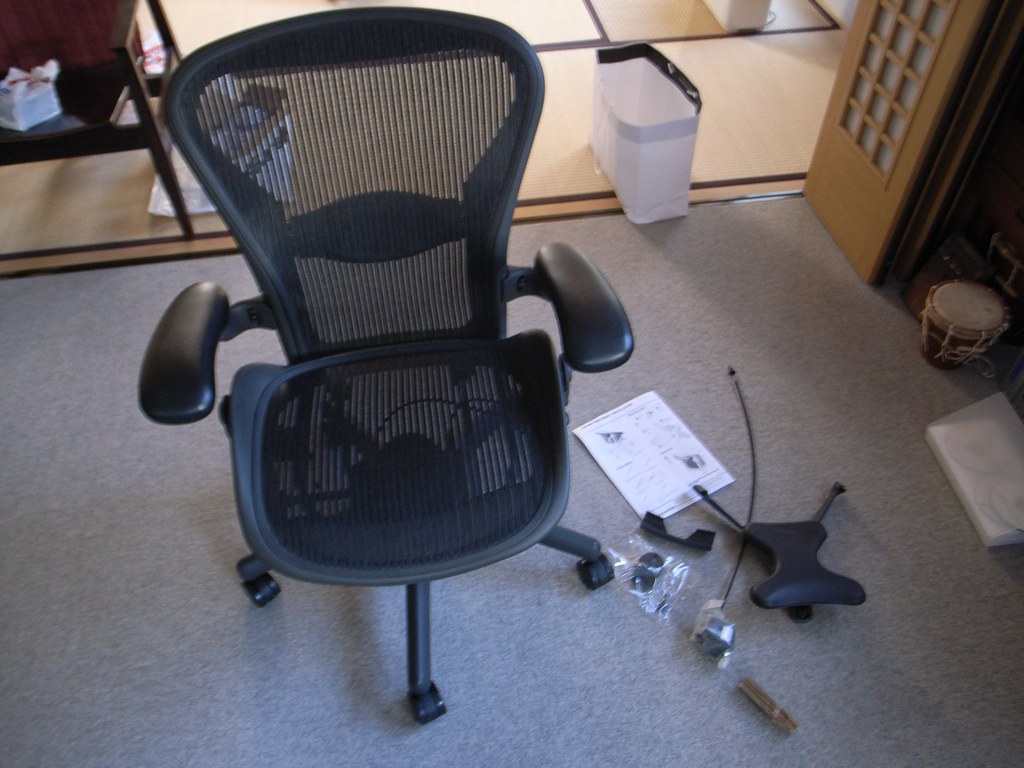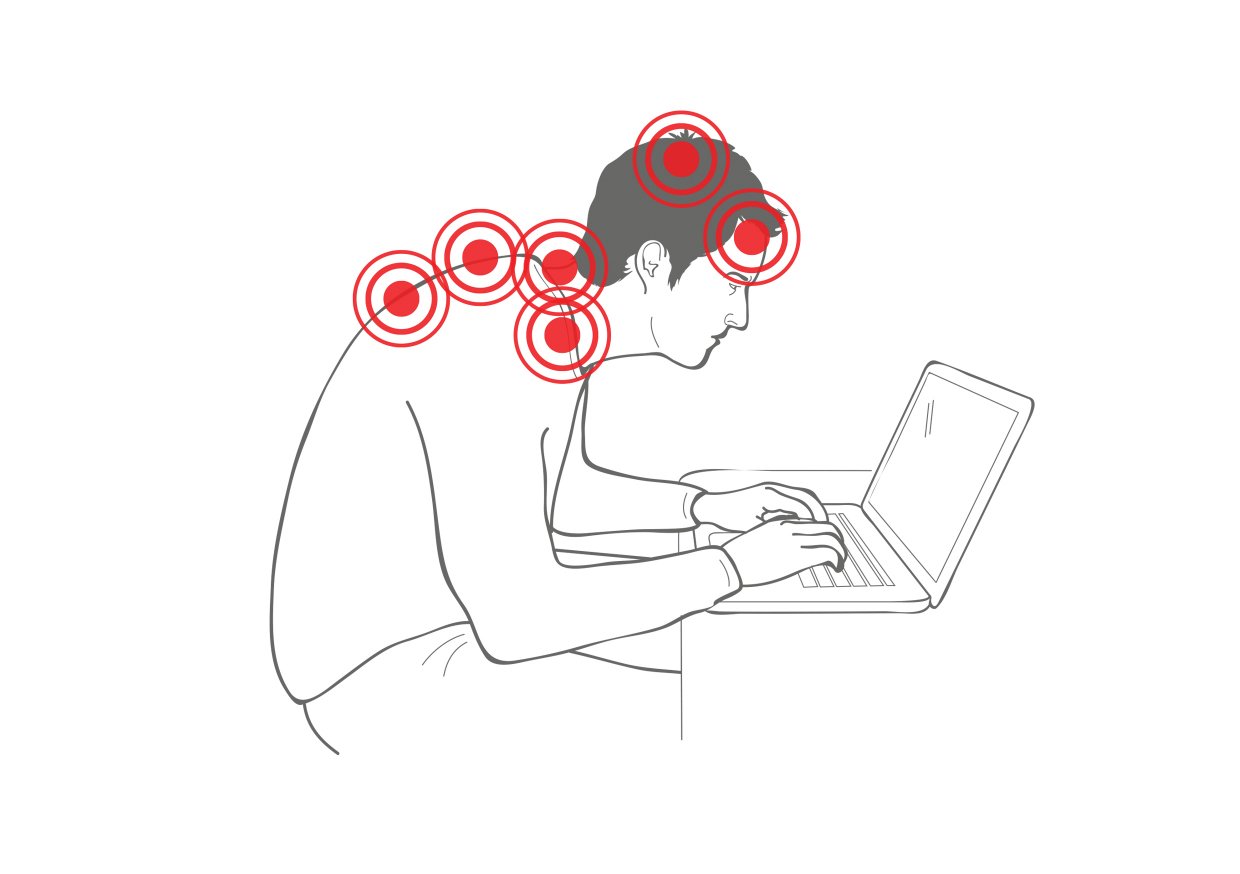
Let’s be honest—most of us spend way too much time sitting. If you’re working from an office or home desk setup, you likely spend more than 8 hours a day sitting in a chair. While this might feel routine, chiropractors are seeing a rising number of patients whose chronic pain and spinal issues stem directly from poor office seating. Could your office chair be the hidden culprit behind your persistent back or neck pain?
The human body evolved for mobility, not for long hours of sitting. Sitting for extended periods weakens the core and postural muscles, which are vital for supporting spinal alignment. This imbalance can strain the lower back and increase the risk of disc herniation or spinal degeneration. This sedentary lifestyle has led to a phenomenon sometimes dubbed “tech neck” or “desk job spine,” reflecting poor posture developed from non-ergonomic work setups.
Understanding these issues is the first step toward a healthier spine. In this article, guided by insights from chiropractic experts like Dr. Gerry, we will uncover the eight most damaging office chair postures and habits that silently contribute to chronic discomfort and spinal problems. By recognizing these culprits, you can begin to sit smarter and move more, taking proactive steps toward a pain-free life.

1. **Slouching or Hunching Over Your Desk**When you slouch or hunch over your desk, it directly flattens the natural lumbar curve of your spine. This critical S-shape is vital for absorbing impact and maintaining balance, and its disruption significantly compromises spinal integrity. This common habit places immense stress on the vertebral discs and surrounding musculature, setting the stage for discomfort.
Over time, this habitual poor posture creates muscular fatigue, vertebral misalignment, and joint stiffness. Chiropractors note that “poor posture is a significant contributor to the development of back pain.” When individuals adopt slouched or forward-leaning positions for extended periods, it places unnecessary strain on the spine, worsening these issues and making daily activities more painful.
If this discomfort is not addressed, it can lead to chronic issues and more severe physical ailments, impacting overall quality of life. Dr. Gerry emphasizes that “posture isn’t just about sitting upright; it’s about having a chair that supports your natural posture.” This highlights the crucial interplay between personal habits and ergonomic support in preventing spinal damage.
To safeguard your spine, simple adjustments can make a profound difference. Start by sitting all the way back in your chair, ensuring your hips are fully engaged with the backrest. Keep your feet flat on the floor, and adjust your screen so your eyes look straight ahead, not down, to minimize leaning. This creates a more neutral spinal alignment and reduces strain.
Furthermore, incorporating effective lumbar support that conforms to your lower back’s natural curve is essential. This prevents slouching and helps sustain an upright posture, thereby reducing the risk of developing musculoskeletal issues. This proactive approach is crucial for maintaining spinal health and preventing the onset of debilitating chronic pain.

2. **Leaning Back in Office Chairs**While leaning back in an office chair might initially feel relaxing, it subtly challenges your spine’s natural harmony and can be surprisingly detrimental. Evidence from chiropractic observations shows that this common posture can significantly increase lumbar pressure and discomfort over time, often without immediate awareness of the harm being done.
Scientific studies have demonstrated that leaning back in office chairs can harm your spine by increasing pressure on your lumbar discs by about 30% compared to standing. This action directly disrupts the spine’s natural S-shape, leading to the overstretching of spinal ligaments and straining the discs themselves. Over time, this can result in muscle fatigue and persistent discomfort as slouching becomes a habitual response to an unsupported recline.
Beyond immediate pain, this posture can also lead to issues with circulation. Poor circulation, particularly in the legs, may manifest as numbness or tingling due to restricted blood flow. This adds another layer of health concern to a seemingly innocuous sitting habit, impacting energy levels and overall well-being.
Chiropractors emphasize the importance of strategic sitting to counteract these risks. To protect your back, they recommend maintaining an upright posture with proper support and alignment. “Proper chair adjustments, including lumbar support and correct seat height, help maintain spinal alignment and prevent pain,” according to key takeaways from expert advice.
To mitigate these issues, it is advised to sit upright with your back fully supported and feet flat on the floor. Make certain your hips are slightly above your knees for better alignment, promoting a neutral pelvis. Additionally, securing the tilt lock and regularly adjusting recline tension can prevent your office chair from inadvertently leaning back, thereby reinforcing ideal posture support.
Read more about: Beyond the Soccer Mom Stigma: Unpacking the 2025 Minivan Renaissance and Why These Practical Powerhouses Are Roaring Back

3. **Forward Head Posture (Tech Neck)**Forward head posture, often referred to as “tech neck,” is a pervasive issue among office workers, frequently stemming from prolonged computer use and looking down at screens. This common pattern is a defining characteristic of what chiropractors “sometimes dubbed ‘tech neck’ or ‘desk job spine,’ reflecting poor posture developed from non-ergonomic work setups.” The head habitually leans forward, placing immense strain on the neck muscles.
In this detrimental posture, the head shifts forward from its natural alignment, causing the cervical spine to bear increased pressure. This sustained forward positioning leads to significant strain on the neck muscles, which, in turn, can result in chronic neck pain and shoulder tightness. The tension can extend further, often contributing to debilitating headaches or even migraines, disrupting daily productivity and comfort.
This constant anterior shift contributes to a range of chronic discomforts, headaches, and can even exacerbate conditions like sciatica due to nerve impingement. Such persistent patterns, characterized by a head that is visibly ahead of the shoulders, indicate the onset of musculoskeletal dysfunction and should not be ignored, according to chiropractic experts.
To combat this insidious posture, adjusting your monitor height is a crucial ergonomic intervention. The recommendation is to position the “top of screen at or slightly below eye level.” Utilizing “monitor risers to prevent neck bending” can significantly alleviate the strain on the cervical spine, helping to restore and maintain a more natural and supported posture.
Beyond ergonomic adjustments, a holistic approach is vital for long-term relief. Incorporating “neck tilts” into your routine is recommended to actively relieve cervical tension, improving flexibility and range of motion. Regular movement and maintaining awareness of your head and neck position throughout the workday can significantly mitigate the development and worsening of forward head posture, preventing long-term damage and promoting overall well-being.

4. **Rounded Shoulders**Often observed in conjunction with forward head posture, rounded shoulders represent another prevalent and damaging postural pattern among individuals who spend extensive periods seated. This posture, where the shoulders slump forward and inwards, actively “compresses the chest and creates tension in the upper back,” contributing significantly to widespread musculoskeletal discomfort.
The persistent rounding of the shoulders places unnecessary and prolonged strain on both the neck and the entire upper back musculature. This frequently results in “chronic neck pain and shoulder tightness,” which can radiate and affect the entire upper kinetic chain. Over time, this imbalance can lead to muscle weakness, stiffness, and reduced mobility in the shoulder joints and thoracic spine.
A often-overlooked contributor to rounded shoulders is the improper adjustment of armrests. “If your chair’s armrests are too high or too low, your shoulders are going to be in constant tension mode,” likened to “shrugging for hours without realizing it.” This subtle yet constant muscular effort highlights how seemingly minor ergonomic flaws can significantly exacerbate poor posture.
Chiropractic guidance emphasizes the importance of restoring proper alignment to alleviate this tension. Experts recommend actively “relaxing shoulders down and back” to encourage a more open and natural posture. Incorporating specific movements like “shoulder shrugs and rolls” is also advised, as these simple exercises can effectively “loosen upper traps and shoulders,” relieving built-up tension from prolonged periods of poor posture.
For proactive prevention, it is imperative to ensure your armrests are correctly adjusted. “Adjust your armrests so your elbows rest comfortably at about a 90-degree angle, close to your body.” This simple yet effective ergonomic adjustment significantly reduces shoulder tension and supports a more open, healthier upper body posture, preventing strain and promoting overall comfort and spinal health during your workday.”
Read more about: Navigating the ‘Worst’ for Your Joints: A Physical Therapist’s Guide to Preventing Damage

5. **The Dangers of Overly Soft Chairs**That initial feeling of sinking into a plush, overly soft office chair might seem luxurious, but this deceptive comfort can silently undermine your spinal health. Chairs designed without adequate firmness or contouring often fail to provide the necessary support for your spine’s natural curves, leading to a host of postural problems. What feels like a soft cushion can, in fact, allow your pelvis to sink too deeply, disrupting the crucial S-shape of your spine.
When a chair is too soft, it permits your pelvis to posteriorly rotate, flattening the natural lumbar curve that is essential for impact absorption and spinal integrity. This lack of support forces the spine into an unnatural, slouched position, placing excessive strain on the vertebral discs and surrounding ligaments. Over time, this can lead to muscular fatigue, stiffness, and increased risk of disc degeneration, contributing to persistent lower back discomfort even if the immediate sensation is one of ease.
Chiropractors frequently caution against chairs that lack firm, supportive padding, emphasizing that effective ergonomic design prioritizes structural support over excessive cushioning. As Dr. Gerry states, “Posture isn’t just about sitting upright; it’s about having a chair that supports your natural posture.” An overly soft chair inherently fails this fundamental principle, allowing the body to fall out of alignment rather than guiding it into a healthy position.
To safeguard your spine, it’s imperative to choose a chair with firm, supportive padding that maintains its shape and provides consistent support. Look for chairs with adjustable lumbar support that can be precisely positioned to conform to your lower back’s natural curve, preventing slouching and maintaining an upright posture. If replacing your chair isn’t immediately feasible, consider adding a small, firm pillow or a rolled-up towel behind your lower back to provide targeted lumbar reinforcement.
Ultimately, the goal is to create an ergonomic environment that actively promotes proper spinal alignment, even during long hours of sitting. By prioritizing chairs with appropriate firmness and customizable support, you can significantly reduce the risk of developing musculoskeletal issues and foster greater comfort and well-being throughout your workday. It’s about proactive prevention, ensuring your chair is an ally, not a hidden adversary, in your quest for a pain-free life.

6. **The Problem of Dangling Legs**The seemingly minor issue of dangling legs when seated in an office chair is a surprisingly common and detrimental habit that can have significant repercussions for your lower back and overall circulation. If your feet don’t comfortably rest flat on the floor or a stable footrest, your body compensates in ways that can subtly, yet profoundly, impact your spinal health.
When your feet are left unsupported, your lower back and hip muscles are forced to work overtime to stabilize your pelvis and maintain balance. This constant, unacknowledged muscular effort is akin to standing on tiptoes for prolonged periods, leading to muscle fatigue and increased tension in the lumbar region. This strain disrupts the natural alignment of your spine, paving the way for chronic lower back pain and discomfort that can worsen over time.
Beyond muscular strain, dangling legs can also impede healthy circulation to your lower extremities. The lack of proper support can compress blood vessels in your thighs and calves, leading to restricted blood flow. This often manifests as numbness, tingling, or a feeling of fatigue in your legs and feet, further exacerbating discomfort and potentially contributing to more serious circulatory issues like varicose veins or deep vein thrombosis (DVT) over time.
Chiropractic experts emphasize the critical importance of ensuring your feet are properly supported to alleviate this unnecessary strain. The “Ergonomic Desk Setup Checklist” explicitly states that feet should be “Flat on the ground or supported by a footrest.” This simple adjustment helps to stabilize your pelvis, allowing your lumbar spine to maintain its natural curve without additional compensatory effort from other muscle groups.
To correct this pitfall, adjust your chair height so that your feet are firmly planted on the floor, with your knees level with or slightly lower than your hips, promoting ideal pelvic alignment. If your chair cannot be lowered sufficiently, investing in a footrest is a highly effective solution. Even a sturdy stack of books can provide temporary relief, ensuring your feet are fully supported. Prioritizing proper foot support is a fundamental step toward preventing lower back pain and improving overall comfort and circulation throughout your workday.
Read more about: The Rack’s Regrets: 8 Weight Benches Users Wish They Never Assembled in Their Gym

7. **The Pervasive Issue of Prolonged Static Sitting**Even with the most ergonomically advanced chair and picture-perfect posture, remaining motionless for extended periods is a pervasive issue that directly contradicts our body’s fundamental design. The human body evolved for mobility, not for long hours of static sitting, and this habit is often referred to as “the new smoking” due to its detrimental effects on health. Our spine thrives on movement, which facilitates nutrient exchange to discs and prevents stiffness.
Prolonged static sitting weakens crucial core and postural muscles that are vital for supporting spinal alignment. When these muscles are underutilized, they lose strength, forcing the spinal ligaments and discs to bear an undue amount of stress. This imbalance significantly increases the risk of disc herniation, spinal degeneration, and chronic musculoskeletal dysfunction. The body stiffens, circulation decreases, and the natural healing processes are hampered by this lack of dynamic input.
Chiropractors are increasingly seeing patients with what they dub “desk job spine,” a phenomenon directly linked to the consequences of prolonged immobility in the workplace. Dr. Gerry emphasizes that “Even the best chair won’t help if you sit motionless all day,” underscoring the vital role of movement. Static postures overstretch ligaments and strain discs, directly contributing to the development of persistent pain and reduced mobility, which often go unnoticed until chronic issues emerge.
To combat the pervasive issue of prolonged static sitting, incorporating regular microbreaks into your workday is paramount. Experts recommend the “20-8-2 rule”: sit for 20 minutes, stand for 8 minutes, and move for 2 minutes. This rhythmic pattern helps to keep blood flowing, relieve joint stiffness, and reduce spinal compression, providing much-needed dynamic relief for your spine and muscles. Setting timers or using reminder apps can be incredibly effective in establishing this healthier routine.
Furthermore, consider investing in a sit-stand desk, which allows you to effortlessly alternate between sitting and standing postures throughout the day. This simple yet powerful tool helps to alleviate pressure on your spine, maintain natural curves, and promote continuous movement, which is essential for long-term spinal health. Integrating simple stretches like shoulder rolls, neck tilts, and hip opener stretches during these breaks can also significantly reduce tension and enhance flexibility, ensuring your body remains active and resilient against the sedentary demands of modern work life.
Final Thoughts: Your Chair Should Work for You, Not Against You
Navigating the modern workday means confronting the realities of prolonged sitting, but as chiropractic experts affirm, understanding these hidden pitfalls is the first crucial step toward a healthier, pain-free life. Your office chair should be an ally in your quest for wellness, not a silent contributor to discomfort. By recognizing and actively correcting detrimental postures—from the subtle anterior pelvic tilt to the widespread issue of static sitting—you empower yourself to make profound changes that benefit your spine and overall well-being.
Read more about: Spill the Beans: 11 Annoying Habits Service Workers Wish You’d Quit Right Now!
Remember, sustained spinal health is a journey that integrates ergonomic awareness with consistent self-care. It’s about creating a spine-friendly workspace that supports your body’s natural mechanics, ensuring your chair provides the right kind of support, and most importantly, embracing the power of movement. Don’t wait for chronic pain to dictate your daily comfort. Take proactive steps, adjust your setup, and make regular movement a non-negotiable part of your routine. If discomfort persists, remember that chiropractic care offers targeted solutions to realign your body and guide you toward lasting relief. Your spine deserves the best, so let’s get you sitting smarter and moving more, one intentional choice at a time.



